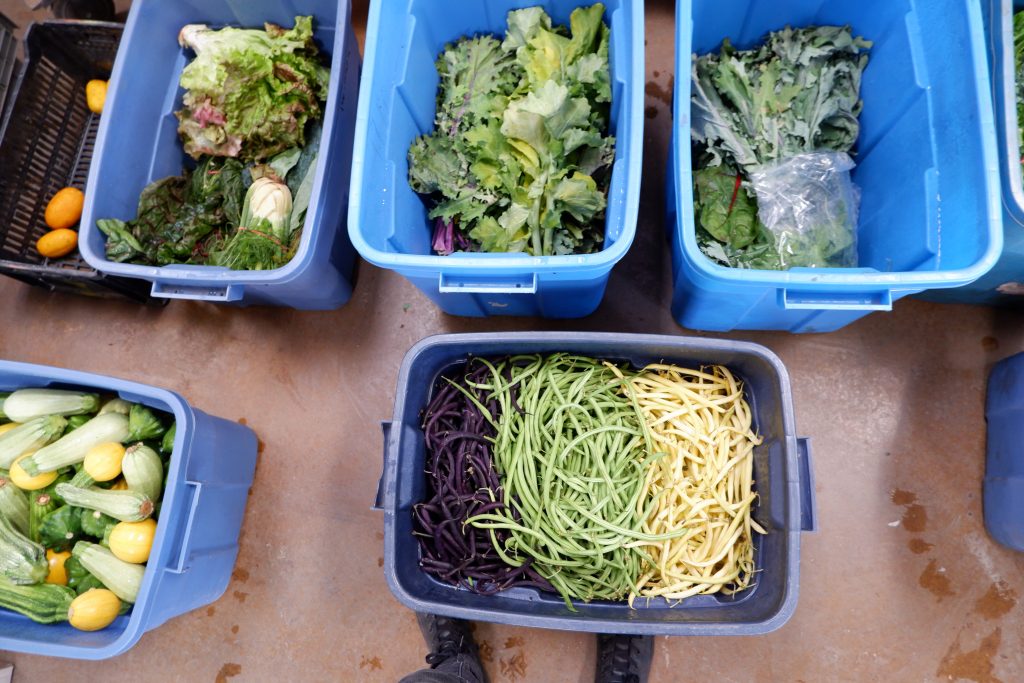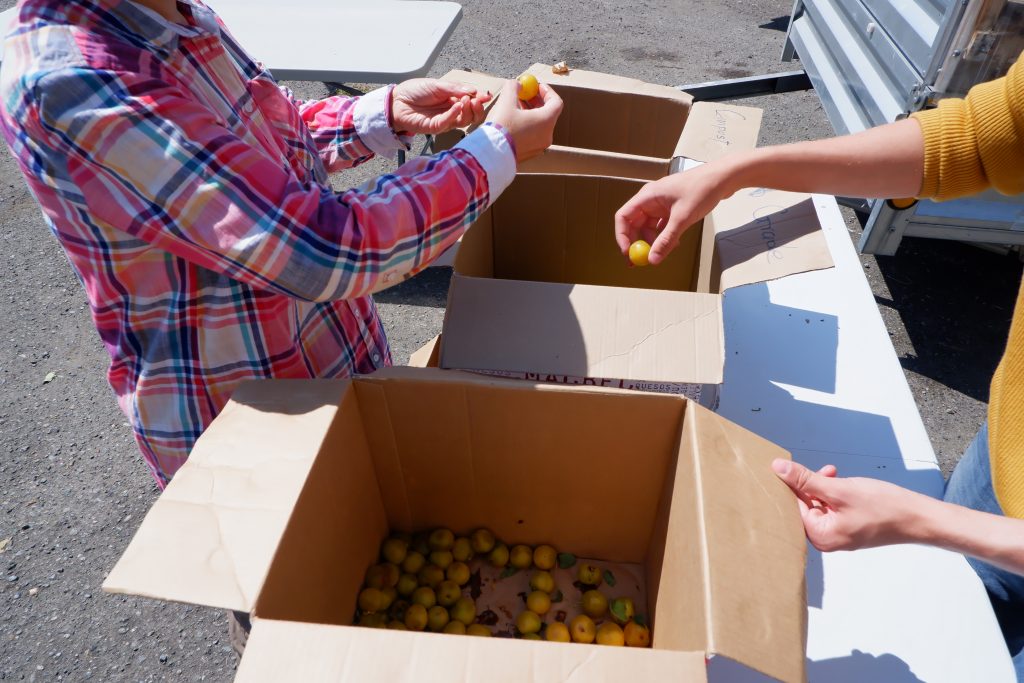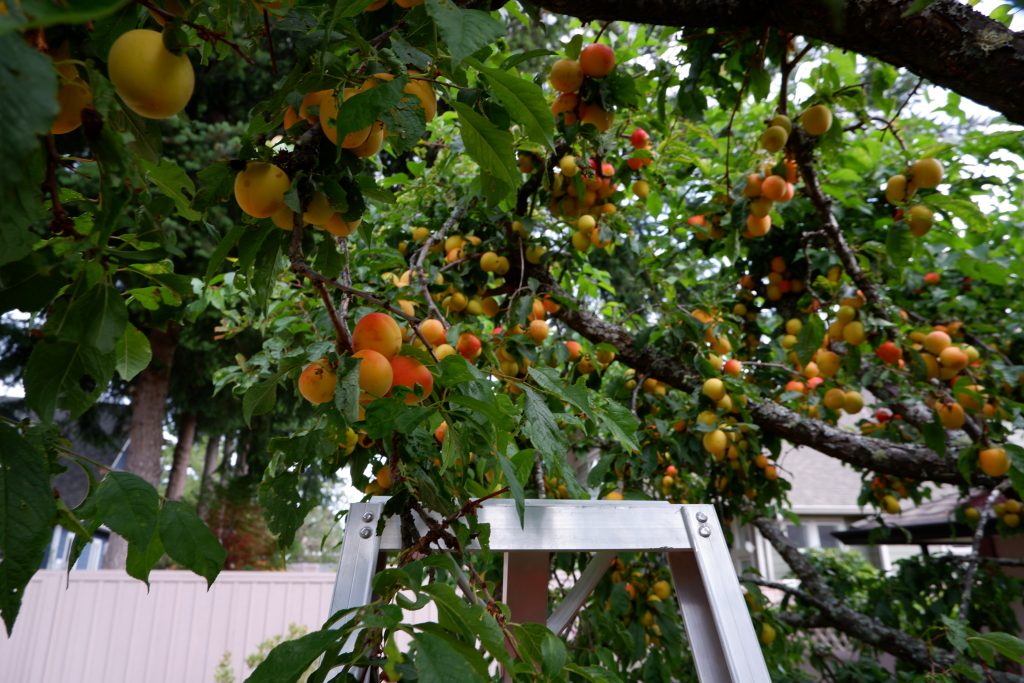
Food in the time of COVID-19
The flu, food, & funds
If you went to a grocery store anywhere in Canada mid-March of last year, likely you’d have seen empty shelves and many panicked shoppers.
Some folks were wearing masks, others filling carts with non-perishable items or spritzing sanitizer on frantic hands. For weeks following this mid-March frenzy, there were posters tagged to grocery store shelves: no more than two cans per person or soon to be restocked, messaging intended to provide comfort to the fearful masses.
For those who were unfamiliar with the feeling of not having enough, empty shelves were a cause for concern. The concept of food as a limited resource was alien. But there are a lot of people in our community for whom this stress is all too familiar.
COVID-19 was life-changing for all and the scarcity mindset it provoked highlighted the pre-existing issues of food security. In Canada, approximately 4.4 million people were food insecure in 2017-18 (according to PROOF data). This year, that already steep number is expected to DOUBLE because of the pandemic (and the population expected to be most severely impacted by this increase is children).
COVID-19 tipped the already precarious scales and plunged a number of people into food insecurity, ranging from living cheque-to-cheque to skipping meals to feeding hungry kids over a hungry parent.
The COVID chaos has made one thing clear: the distance between have and have-not is not as wide as we once thought. In fact, the line between having a full cupboard and having a mostly empty one is heavily dependent on one factor: INCOME.

Food insecurity is not a lack of food, but a lack of INCOME
There is a causal representation between a full bank account and a full fridge.
This became obvious in the way we saw people panic-shopping: when tasked with stocking up for two or three weeks at a time, it was the financially stable folks who could buy out an entire meat department or fill their spare closets with rolls and rolls (and rolls) of toilet paper. But even those who may have been previously able to afford the groceries they needed, and more, were now in a tough economic spot.
The choice between groceries and rent. Or groceries and gas. Or groceries and clothing for your kids. Groceries and car insurance. Groceries and prescription medication. The list goes on and on.
Shortly after the first lockdown began on Vancouver Island, a Facebook group was started with the goal of providing mutual support and aid. In communities across Greater Victoria, folks came together to provide financial and emotional support. Now at over 11,000 members, this public group’s description encourages community togetherness over individualistic fear and greed.
The group is public, but participation in the group involves a community buy-in. There are rules to follow and reciprocal respect is expected. In order to ensure needs are met in a fair way, moderators provide a template for posts and encourage equality by limiting the maximum number of posts per week (unless there are exceptional circumstances). Boundaries and privacy is to be respected at all times. This is a safe and judgement-free zone. From what we’ve seen, this group has been doing good work.

A mutual aid group can often be more beneficial than a food bank in that it can respond to specific needs and provide folks with what they need in the moment, with dignity.
But is it sustainable? Without overarching change to current systems, probably not.
Moderators are already burning out (the group is run by volunteers, all of whom have busy lives and needs of their own). Grass roots movements like these are so valuable, but they can take their toll on organizers. And financially it relies on the people in the group to continually redistribute wealth, but what if the wealth within the group runs out? What happens when the pressure of performing a thankless task, the kind that does not get easier but harder over time, catches up with the group?
Instead of letting something fizzle out, why not build on the momentum created by this influx of mutual aid? What would happen if beyond a community-organized bandaid, there was a country-wide solution to these daily struggles that existed pre-pandemic but have been magnified since? Instead of waiting to react to a problem like food insecurity what would happen if we put something in place that proactively approached the root issue of said problem?
And this brings up another interesting question. Who is responsible for public health?
Of course, we are each individually responsible for our own care in some capacity. But as members of a larger community, it can be argued that the leaders of that community (in this case, our political leaders) should also be taking on the responsibility of their population’s health and wellness.
Regardless of their personal economic situation, no one should go hungry. Is it not a basic human right to feed ourselves nutritious and culturally appropriate meals? Is it not the responsibility of our elected officials to reinforce and protect our basic human rights?

Creating opportunities out of crisis
There is always reason for change and the pandemic has provided the opportunity to create lasting change in Canada (and across the world).
We’ve seen our communities come together and help each other out. And this is great and important work, but what will make these programs sustainable is large scale change. What will alleviate the stress on our social services is to provide better social services. There is more than enough food, but people can’t afford it. It’s like the old adage: if you teach a man to fish, he can eat for a lifetime. If you give a man a fish, he will eat for a day.
We need to provide the tools to combat food insecurity. Now, we’ve been living in a pandemic for almost a year. Most folks have gotten the hang of it– the handwashing, the mask-wearing, the social distancing. Now, before we get too comfortable, it is the time to continue advocating for systemic change.
Sources:
Food insecurity during the COVID-19 pandemic, May 2020
PROOF: Household Food Insecurity in Canada
Food Insecurity on the Rise in Canada